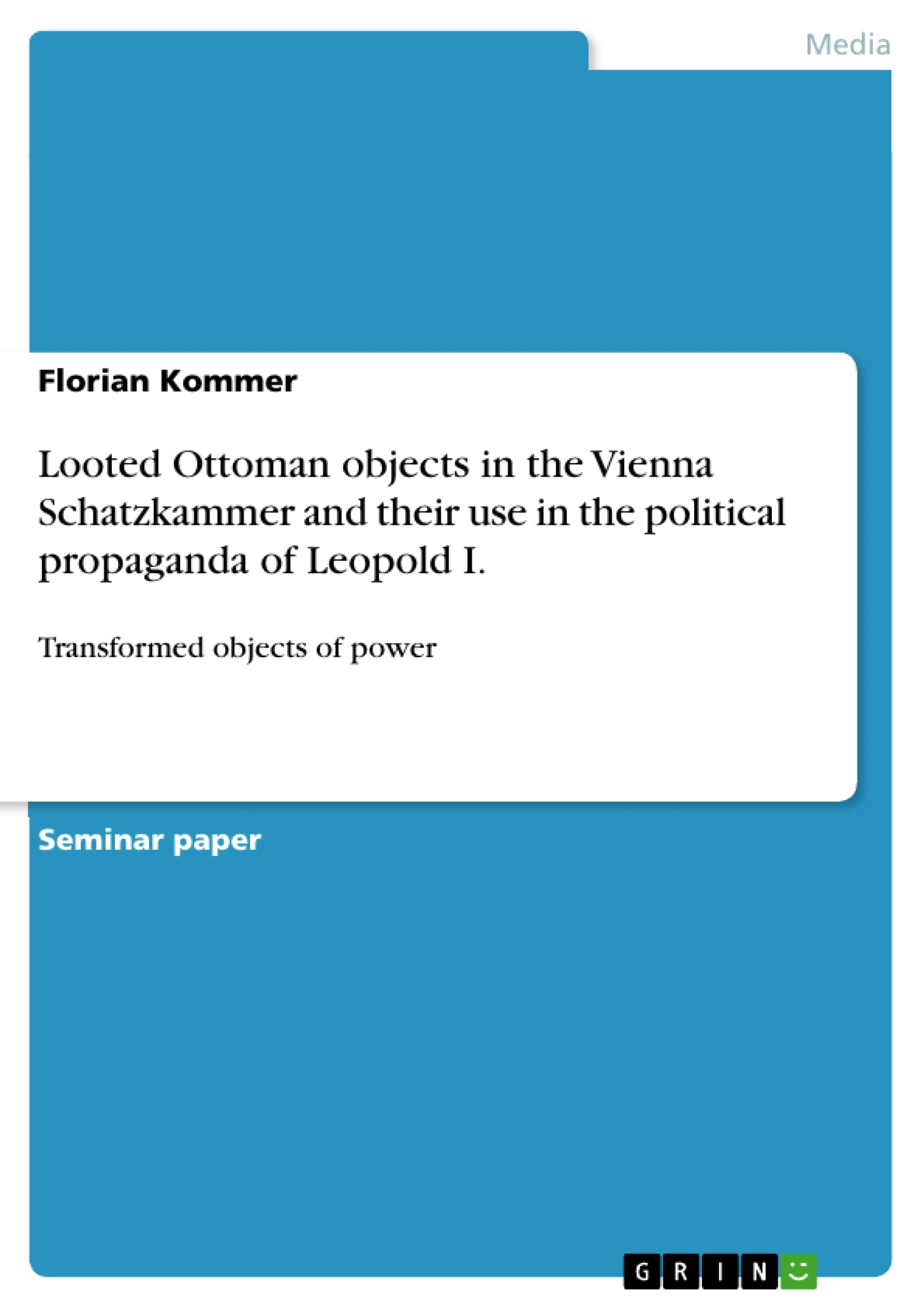This paper examines the history of two objects from the art collections of the Habsburg Court in Vienna that were looted during the Great Turkish War. The first object is an Ottoman silk flag that was looted during the Great Turkish War and is now on display in the Museum of Military History in Vienna. The second object is the seal of Sultan Mustafa II, which was looted in the Battle of Zenta in 1697 and is today also in the collection of the Museum of Military History in Vienna. The two objects are worth investigating because both appear in the contemporary media and were owned or appropriated by influential political figures of the time. The research question of the thesis is therefore: What political meanings were attributed to Ottoman objects in the Habsburg treasury that were appropriated due to the Great Turkish War? It will be shown how the Court of Leopold I used art and loot for propaganda purposes, especially to demonstrate its religious and political legitimacy and superiority.
Inhaltsverzeichnis (Table of Contents)
- Introduction
- The Great Turkish War from the Habsburgs' Perspective
- The Schatzkammer at the Imperial Court of Leopold I.
- The Ottoman Silk flag in the Heeresgeschichtliche Museum, formerly part of the Imperial Secular treasury.
- The Seal of the Grand Vizier, looted in the Battle of Zenta 1697
- Conclusion.
Zielsetzung und Themenschwerpunkte (Objectives and Key Themes)
This paper examines the political and social implications attributed to two objects that became part of the Imperial secular treasury due to the Great Turkish War, specifically an Ottoman silk flag and the seal of Mustafa II. The research question is: What political meanings were attributed to Ottoman objects in the Habsburg Schatzkammer that were appropriated in the Great Turkish War?
- The political and social implications attributed to objects looted during the Great Turkish War
- The role of object history in understanding the political dynamics of the conflict
- The significance of the Habsburg Schatzkammer in the context of political propaganda
- The use of Ottoman objects as symbols of power and legitimacy by the Habsburg dynasty
- The relationship between the Great Turkish War and Austrian national identity
Zusammenfassung der Kapitel (Chapter Summaries)
- Introduction: Provides an overview of the Great Turkish War (1683-1699) and its significance for Austrian and Central European history, outlining the paper's focus on object history and the political meanings attributed to looted Ottoman objects in the Habsburg Schatzkammer.
- The Great Turkish War from the Habsburgs' Perspective: Discusses the historical context of the Great Turkish War, highlighting the conflict's importance for the Habsburg Empire, the siege of Vienna, and the significance of key battles such as the Battle of Kahlenberg and the Battle of Zenta.
- The Schatzkammer at the Imperial Court of Leopold I.: Explores the history and function of collection cabinets at the court of Leopold I., including the Schatzkammer, Kunstkammer, and Rüstkammer. It emphasizes the role of these collections in political propaganda and the legitimization of Habsburg rule.
Schlüsselwörter (Keywords)
The main keywords and focus topics of this paper include the Great Turkish War, Habsburg Schatzkammer, Ottoman objects, object history, political propaganda, Habsburg dynasty, Austrian national identity, and the significance of appropriated objects in shaping political narratives.
- Quote paper
- Florian Kommer (Author), 2023, Looted Ottoman objects in the Vienna Schatzkammer and their use in the political propaganda of Leopold I., Munich, GRIN Verlag, https://www.hausarbeiten.de/document/1405323


